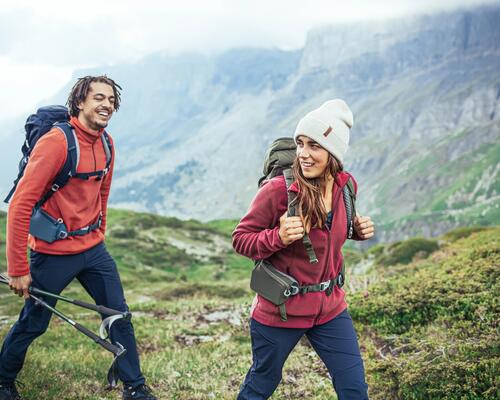Make sure you have a basic waterproof top/bottom combination
Waterproof jacket and over-trousers are two essentials. They are often very light and easy to slip into a backpack. Some overtrousers even come with ankle zips, so that you can get them on/off without removing your shoes.
The added extra: Regarding tops, there are two schools of thought, i.e. those who prefer ponchos and those who prefer jackets. The poncho has the advantage of protecting both yourself and your backpack. However, in windy weather, it quickly becomes a hindrance and can even prevent you from seeing where you're putting your feet. A jacket doesn't protect your backpack but does offer great freedom of movement. In this case, consider protecting your backpack with a cover. Some Quechua backpacks have a built-in cover.







